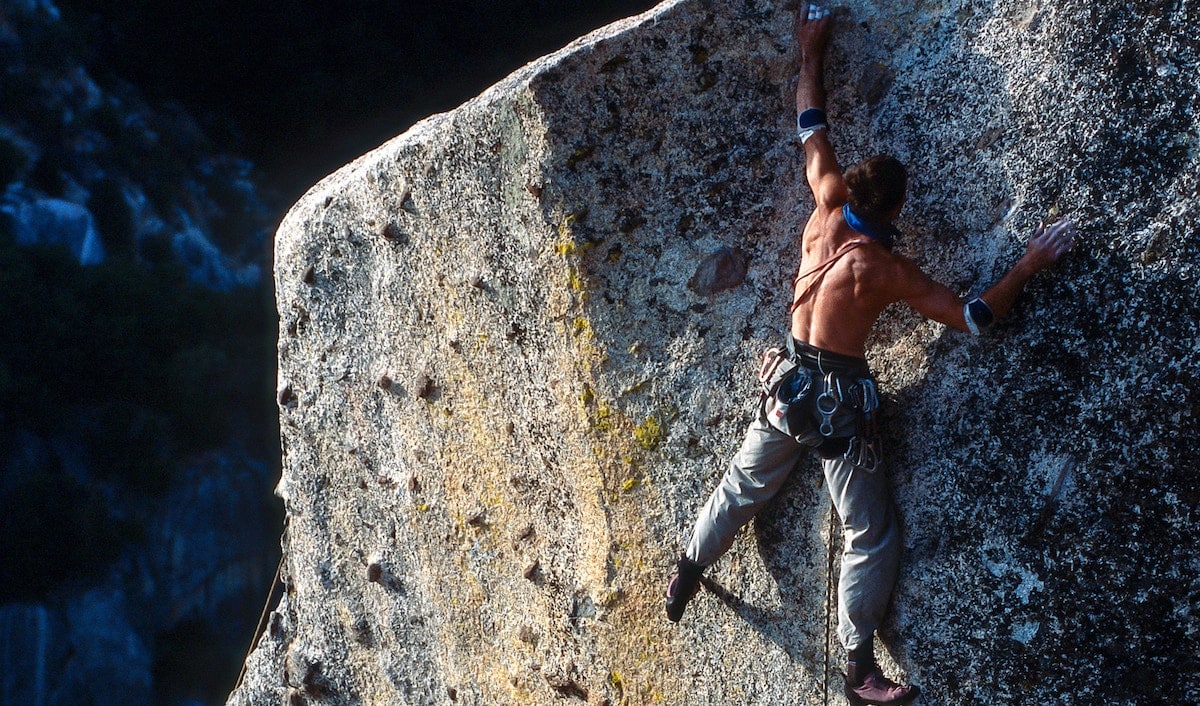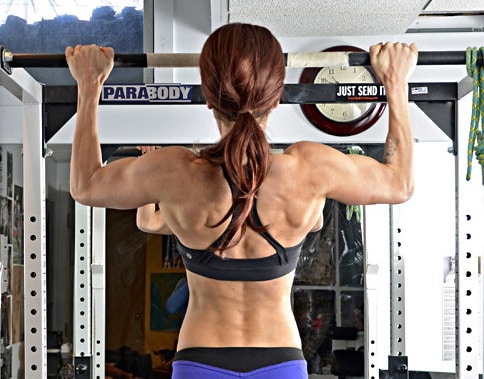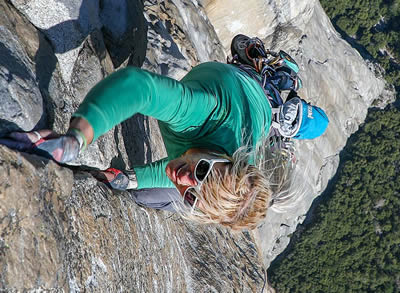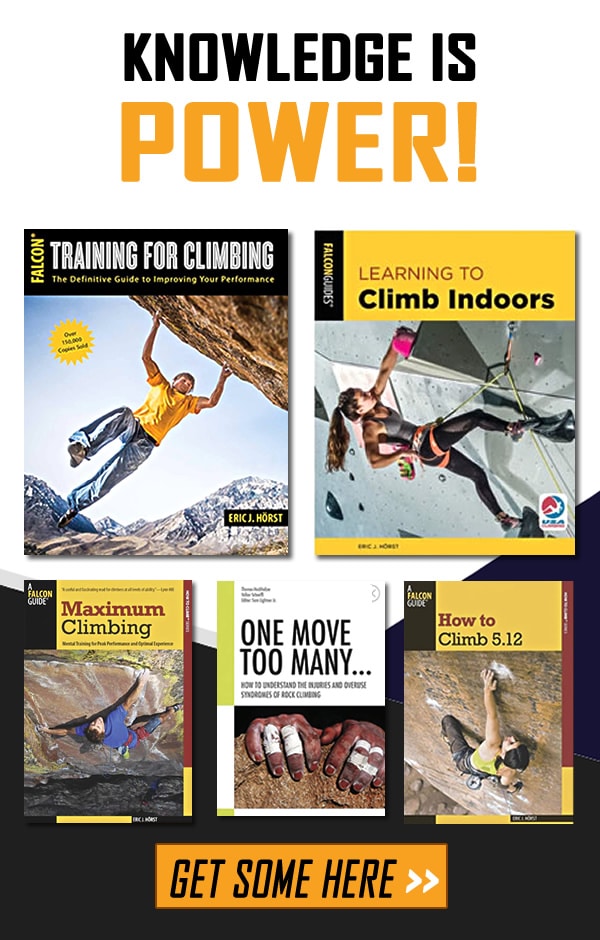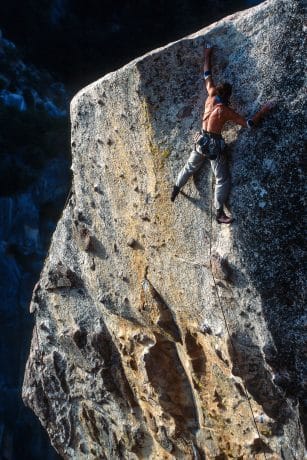
Tall climbers can’t always rely on the ability to “just reach through it”. There’s more to tall beta than that.
Short climbers don’t get to have all the excuses. Tall climbers have it rough too. Try these tips for squeezing into small spaces and making the most out of the inches you’ve been gifted.
Don’t worry, tall folks—we know life as a climber isn’t easy for you either. It’s not always possible to simply reach through the crux. Scrunchy positions can pose just as much of a challenge for lanky climbers as long moves do for their petite counterparts.
As the shortest climber in my circle by a long shot (pun intended), it took me a while to let go of my jealousy and have sympathy for those more blessed in the height department. But the truth is, we’re more alike than not. Both short and tall climbers lie on the extreme ends of the spectrum. Outliers on either end will inevitably face difficulties fitting into average-sized boxes. While our methods will differ, we can bond over the shared struggle.
In terms of methodology, I’ll leave that to the experts on tall beta. Check out what these accomplished climbers, all at least six feet tall, have to say about managing their height.
Gear
Contrary to smaller climbers, tall climbers often struggle to condense their limbs into tight spaces. This means that soft shoes should take priority in a tall climber’s quiver. Soft rubber allows the toes to sink into the holds more deeply. It flexes around each foothold rather than perching atop it. Those mere millimeters can mean the difference between just barely squeezing into a kneebar or not. Pay attention to the thickness of the rubber, too. Aim for highly sensitive shoes that get your toes as close to the rock as possible.
Moving up the body, outfit yourself for comfort with a well-padded harness. More height means more weight, and no one wants to worry about a sore back when you’re trying to send. Invest in an especially cushy harness to soften the blow of big whips and hangdog-heavy projecting sessions.
Technique
For tall climbers, smart technique centers on sinking deep. If you never learned to drop it low in your college days, now’s your chance!
Upper Body
Forget T-Rex arms. Yes, it’s tempting to shorten your limbs by folding your arms in on themselves… but in reality, this only prevents you from positioning yourself under a hold where the friction’s best. Extend your arms to their full length, then settle the rest of your body underneath them.
Nolan Robertson, a 6’2” from Grand Junction, Colorado, then suggests using that reach to skip as many moves as possible. Starting with extended arms serves as a reminder of all that your wingspan is capable of. Get to know the true extent of your reach by defaulting to straight-armed positions, and prime your eyes for holds at that distance. Just because you see options in between doesn’t mean that you have to use them. It takes practice to train your brain to ignore the barrage of chalked-up intermediates and go straight for the gold at the end of the rainbow. But doing so will save you precious energy that you’re better off dedicating to the demands on your lower body.
As far as your fingers go, Jonathan Hörst (6’3”) suggests keeping your eyes peeled for thumb catches. Tall climbers often have long fingers, which can make fitting into small crimps more difficult. Put your thumbs to work by turning crimps into pinches whenever possible, to take some of the onus off of your fingertips.
Lower Body
Your arms have it easy: all they have to do is embrace their length. Your legs, on the other hand, have their work cut out for them. Get ready to feel the burn in your quads as you plunge into deep squat stances. According to Garrett, “scrunchiness is often resolved by dropping a foot and sinking into a deep, one-legged squat position”. Practice releasing one leg into a flag position while letting the other support your weight beneath you. The working leg must then take over T-Rex duties from your arms. Bend your knee as deeply as the joint allows, and press the hamstring into the calf. Turn your hip out so that the knee trends laterally away from your body. Such a position makes room for your hips to sink lower, which brings your entire trunk down as well.
To that end, Suzu Cornella (6’0”) and her partner Dan (6’5”) both emphasize the importance of flexibility when it comes to perfecting tall climbing technique. Train your hips to remain open both vertically and laterally on the wall. This allows your long legs to tuck up tight and stay out of the way.
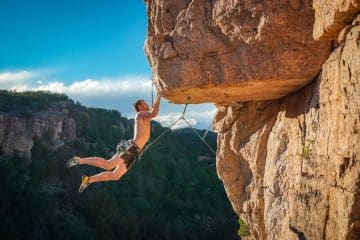
More inches, more problems. Height can make it feel like your long limbs splay out or get in the way!
Strength
As you can surely see, tall climbers need strong quads for such deep-seated positions. Make squats of all kinds your go-to exercise in the gym. This includes your traditional heavy barbell squat, as well as alternatives like goblet squats, pistol squats, and step-ups. Get those quads used to bending deep and bearing your weight.
Garrett and Cornella both offer the reminder that core strength is crucial for tall climbers. “Think about the span between your fingers and toes,” Garrett prompts. “That seven to eight foot gap is a very long distance. You need enough core strength to support that span.” This is especially true on overhanging routes and boulders.
“A strong core is essential for the tall climber,” Cornella adds. “It’s impossible to actually use your reach without it.”
Focus on peripheral core strength for the sake of sending tension throughout your lengthy limbs. You’ll need it for everything from hiking your legs up high to holding extended stances from tip to toe. Leg lifts, starfish crunches, planks, and front levers all train the outer limits of your abdominals for the most functional core strength in these positions.
Finally, when it comes to finger strength, keep proportionality in mind. Zach Gustav (5’10″…but with a +2 ape!) advises that “training on edges should be proportional to size and weight; the larger you are, the bigger the edge”. Don’t get caught up in ego contests at the hangboard with your smaller friends. That’s a great way to derail your training, and get injured to boot. Train for the body you have. Start on big edges and slowly work your way down. Your fingers may also need more dedicated time and attention than others because of the additional load they have to bear. Prioritize deliberate finger training in your climbing routine on a year-round basis for the sake of strength on the wall as well as injury prevention. Pay special attention to three-finger “drag” grips. For those with long fingers, this position makes crimps more manageable.
Height may not always feel like the advantage it’s so often regarded as. But with the right attitude and approach to training, even the tallest among us can learn how to honor every inch on the wall.
Related Articles:
- Shorty Beta: Hacks for Short Climbers to Maximize Their Reach
- Self-Discipline and Commitment: The Great Equalizers
- Belaytionship Tips for Safe, Confident Climbing with Your Belay Partner
- Training with Long Duration Isometric Exercises
- Steep Route Techniques to Climb Harder
Copyright © 2000–2023 Lucie Hanes & Eric J. Hörst | All Rights Reserved.

